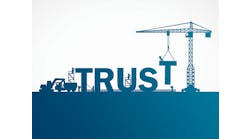Latest from Michel
Plumbing in the Age of Transparency
4 Economic Headwinds and How to Tack Against Them
Sponsored
Getting your company mentioned in the local paper or on local news websites is one of the best ways to promote your business. Before you can submit a newsworthy item, you need to know how to write a press release.
Using the proper form is important. Media outlets receive lots of press releases and often make instant decisions on what to keep and what to toss. Adhering to the expected format is mandatory.
Here are seven ways to make sure your press release looks professional.
Include contact information: Your press release should include contact information. Include the contact’s e-mail address, phone numbers, fax number and website. The traditional placement is the top left. Today, it’s also acceptable to put the contact information at the end of the press release.
Usually, no one will call you about a press release. When you are called, it’s typically because the publication wants to give you more ink than you put into your press release and is seeking additional comments. Return any calls immediately.
Include a release date: At the top of your press release, usually flush right, provide a release date. If you want the story to run as soon as possible, write “For Immediate Release.” Sometimes you may want to embargo the story until a certain date has passed. For example, you’ve just acquired a competitor and the seller wants to hold off announcing it until he can talk with his employees. Either write “For Release On DATE, For Release On or After DATE,” or “Embargo Until DATE.”
Use the five Ws: The press release copy should read like a newspaper article. One of journalism’s standard conventions is to write a one or two sentence lead paragraph that answers the five Ws, which are who, what, when, where and why. While it’s not always possible to include all five Ws, you should always limit the length to one or two sentences. Be succinct. For example, Maderville’s Ashenden Plumbing announced the addition of Turner Alfred Rensch to the company’s staff of licensed master plumbers today, to meet the company’s growing demand.
This covered the five Ws. Who: Turner Alfred Rensch. What: Ashenden Plumbing hired him. When: Today. Where: Maderville. Why: To meet the company’s growing demand.
Five Ws or not, it’s about as thrilling as mud. The first paragraph should sell the reader (and before the reader, the editor) on the story. It should be exciting. The first sentence must let the editor know the essence of the story with only the details remaining.
For example, Water purification specialist, Turner A Rensch, joined the expanding team of Ashenden Plumbing’s specialists today as part of a campaign to deliver Maderville homeowners tap water equal in quality, purity, and taste to bottled water, but without the cost. Now doesn’t that make you want to read more?
Write like a journalist: In journalism the most important information is included at the beginning of a story and the least important information comes at the end. It’s called the pyramid. The story starts narrow and focused, but expands and broadens. If a publication running your press release is short of space, the editor is going to start lopping off at the end.
Write in the third person. Quote company executives for opinions or unverified allegations. Remember, journalists like to tell themselves they are neutral, objective, unbiased reporters.
Use teletype symbols: The old teletype symbols to signify the end of a transmission or story were either the three tic-tac-toe or number symbols, or “30.” By using these at the end of your press release, you send a subtle message that you are an insider. Use ### or -30- at the bottom, centered, but not both.
Double space: In the past, press releases were double spaced to leave room for editorial marks. Even though editing is done on the computer today, it’s still good practice to double space and leave one inch margins all around. Some editors read material online. Others will print a copy and make copyediting marks.
Two pages: Press releases should rarely exceed a page and never exceed two pages. Long press releases are deleted in short order.
A call to action: Near the end, give readers an action step to take. It could be a reason to call your company, a special offer or to call for free information. Getting your name in print is nice. Getting the phone to ring is better.
Write the headline: Write a headline to sell the press release to the editor on reading the lead paragraph. Recognize that the editor will probably change your headline. Center it above the story and bold it. For example, Acme Plumbing Seeks Pure Water For Chicago.
For a free copy of the booklet, “Cracking the Public Relations Code,” call toll free 877.262.3341. Be sure to mention Contractor magazine.
Matt Michel is the CEO of the Service Roundtable, a business alliance of plumbing, HVAC, electrical, and service contractors. Learn more about the Service Roundtable at www.ServiceRoundtable.com, or e-mail Matt at: [email protected].
Matt Michel | Chief Executive Officer
Matt Michel is CEO of the Service Roundtable (ServiceRoundtable.com). The Service Roundtable is an organization founded to help contractors improve their sales, marketing, operations, and profitability. The Service Nation Alliance is a part of this overall organization.

